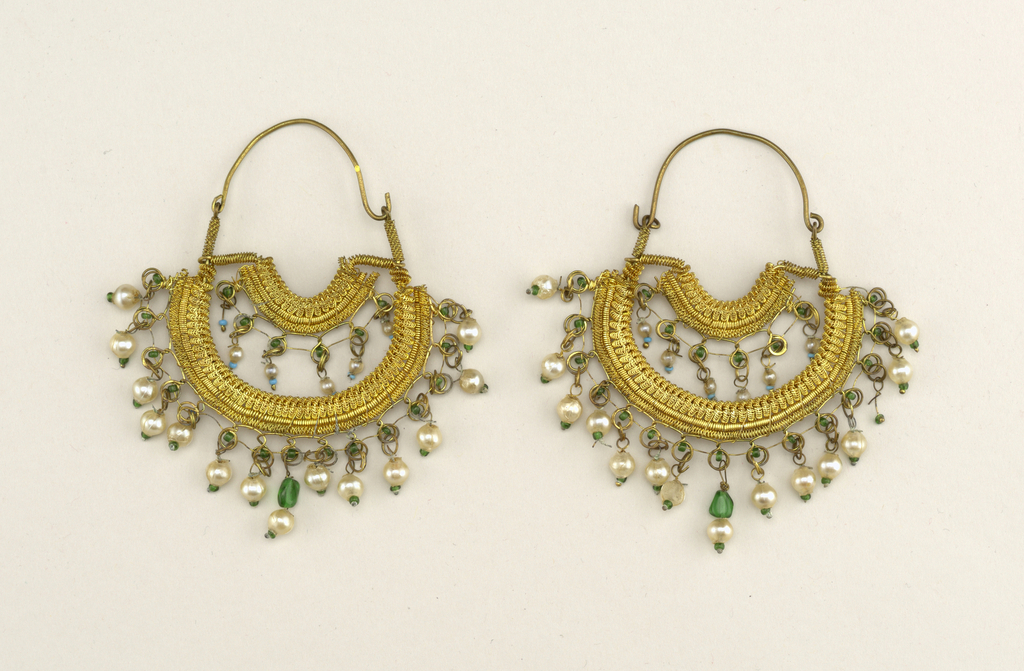Search Demo: Museum Collection
Explore ElasticPress' search and faceting capabilities with the catalog of the Cooper-Hewitt Museum.
You can also get more detail on specific features by clicking the ElasticPress logos () located around the page.
-
Earrings (India), late 19th century
Pair of earrings. Turquoise matrix and silver.
-
Earrings (India), late 19th century
Pair of earrings of gilt metal, filigree, the outer half circle form has suspended white glass pearls and beads in green and turquoise. Inner circle is set with pendants.
-
Sarong (Indonesia), 1900–1950
Sarong with horizontal repeat of large-scale curving floral spray (“buketan” motif) surrounded by birds and butterflies in black, red, and blue on undyed ground. Narrow black side borders with blue…
-
Earrings (USA), ca. 1850
Pair of earrings of hairi-work woven into spherical and cylindrical forms, mounted in gold.
-
Earrings (Italy), ca. 1860
“Florentine Mosaic” parure, set in gilt metal filigree and granule decoration surrounding circles (upper portion of earrings), and half-circles of porcelain or enamel. The parure is composed of: brooch; pendant…
-
Sarong (Indonesia), 1900–1957
A panel of glazed cotton, resist-printed, probably by a batik method known as cap (tjap) printing (wax resist applied by means of blocks inlaid with copper strips). Two-thirds of the…
-
Sarong (Indonesia), 1900–1957
A panel of glazed cotton, resist-printed, probably by a batik method known as cap (tjap) printing (wax resist applied by means of blocks inlaid with copper strips). Design is dark…
-
Sarong (Indonesia), 1900–1957
A panel of glazed cotton, resist-printed, probably by a batik method known as cap (tjap) printing (wax resist applied by means of blocks inlaid with copper strips). Design is dark…
-
Sarong (Indonesia), 1900–1960
Long, coarse cotton panel, probably a sarong, in rust, blue, and dark brown on cream ground. Two foliage borders followed by the head or ‘kepala’ of the piece with two…
-
Sarong (Indonesia), 19th–20th century
Sarong, cap (tjap) printed (using block to apply wax) and filled with canting (tjanting) (hand tool used to apply wax), in two shades of rust red and light blue. Printed…
Search Collection
Country
Object Type
Color










